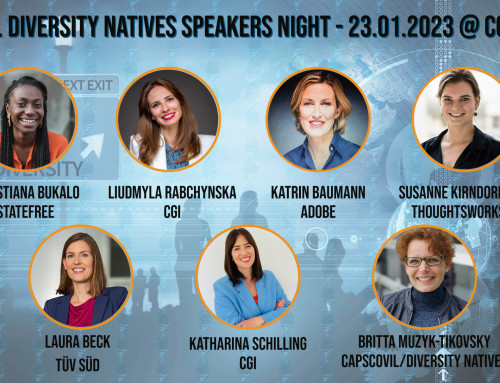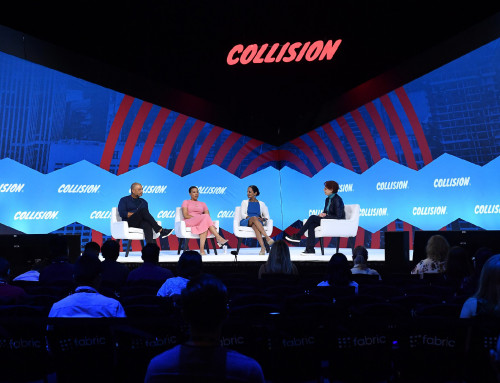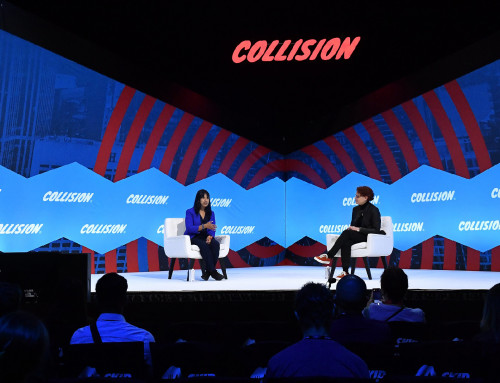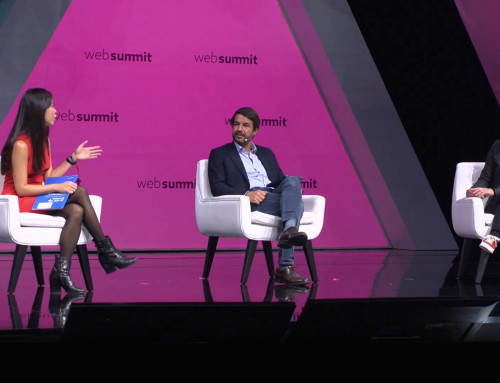by Barbara Brauner
On 6-7 November 2017, the 15th edition of TU Automotive took place in Munich, Germany. The event brought together representatives from the connected cars, mobility & autonomous vehicles spheres – automakers, technology suppliers and startups were present to discuss the future of mobility.
The conference was kicked off by a series of talks from some prestigious European automakers and they made one thing clear right away: automakers are not willing to let go of the “car” as their core product in the near future. As more and more successful young companies are aligning their business model to the idea of “Mobility as a Service” (MaaS) instead of mobility as a product, the question remains whether this focus will lead automakers to a prosperous future.
Services hover around the car instead of novel transportation concepts
Emphasis was put not on the technology of autonomous driving itself, but on the rising importance of services around the car with the advent of autonomously moving vehicles. For example, in future, automakers need to offer valuable services to the passenger as the former driver now has a lot of time at his hands. During this spare time, the passenger needs to be entertained or given the possibility and the tools to get some work done. One example from Audi was the creation of “elastic” media formats that are tailored to the length of the ride, to the passenger’s preferences, and even to the ambient conditions such as speed of the vehicle. With these “gimmicks”, it feels a bit like automakers keep up their old habits and objectives – being better than their competitors, instead of doing something completely unique and novel.
Admittedly, it makes sense for automakers to focus their resources on services instead of products, if they don’t want to end up as mere hardware suppliers and to suffer a fate similar to Nokia or Motorola. Today, even if these automotive incumbents build the best cars available people want to buy experiences and not hardware! However, many of the presentations given seemed more conservative than visionary.
Connectivity as the enabler for the mobility of the future
According to Volkswagen’s Head of Connected Car Heiko Huettel, four pillars define the mobility of the future: connectivity, autonomous driving, electrification and shared mobility; whereas the latter three all depend on the first one. Connectivity will be the enabler for future mobility, this seems to be the unanimous opinion.
Throughout the conference, the discussion repeatedly hovered around the issue of connectivity – and questions for which every party involved has their own views and solutions to: does it make more sense to implement local connectivity networks or 5G? When will 5G finally arrive? Is 5G even necessary and won’t 4G suffice for sending the relevant data? There is no consensus yet, and regulation adds to the problem by delaying the decision to dictate one mandatory solution.
The role of startups in mobility
For the first time, TU Automotive organized for startups a special section that included an exhibition area and a small stage. The stage was especially well attended during the pitch sessions which indicated at the level of the interest conference participants (and, therefore, the interest of OEMs) have in startup innovations. The exhibiting startups ranged from design agency for automotive HMI, eye-tracking devices, drone insurance, asset tracking (blik), software and hardware cyber-security solutions for cars to motion planning software for automated driving (embotech).
Whereas automakers and technology providers at the conference seemed to focus their energy on creating the best user experience for the driver, the startups were more technology-driven. Their aim is to improve one piece of the puzzle by developing novel technologies or by combining existing technologies
The path to autonomous mobility as a service
An interesting impulse came from the mobility provider Ridecell who, for example operate ReachNow, BMWs car-sharing platform in the USA. They presented a “recipe” for entering the 9 trillion USD “Mobility as a Service” market (calculated as market cap for MaaS provider by 2030).
“Autonomous Mobility as a Service” (AMaaS) includes parts of both car-sharing and ride-sharing. The idea is to hail a ride via your smartphone and share this ride with other people going in the same direction. Where can you possibly start and get a foot in the door of this most promising future market?
Ridecell argues that it’s best to start with car-sharing. Even though your customer base will be smaller than for a ride-sharing provider, you have the advantage of owning and servicing a fleet instead of managing drivers. Further, you can benefit from the possibility of opening up your platform to other providers instead of setting up a closed system.
Starting with car-sharing, the provider can then expand its services and rent cars to professional drivers in shifts. The next step in the evolution is that the driver doesn’t move around single persons but multiple persons sharing one ride. Finally, with the advent of autonomous driving, the provider can cut costs significantly and employ self-driving cars to pick up people and comfortably take them from A to B.
The future is near and the cards are being re-shuffled
To put it in a nutshell: car-related UX will become even more important in the future. Connectivity will be the enabler for autonomous driving and is therefore the number one challenge to solve in the immediate future. Autonomous mobility as a service will be the ultimate goal for the time being. Those, who can get there first, will have a bright future ahead of them.
Some important pieces of the puzzle were missing. Technological prerequisites are taken for granted and are mostly left out of the discussion. However, someone who closely follows, for example, the sensor fusion development, will know that there are still some major challenges to be overcome until cars can drive autonomously from A to B. Not to mention the complete regulatory environment that needs to be put in place!
The question arises whether it will be enough for automakers to position themselves as a “product+” (services) company. Currently, as this event showed once more, the solutions for specific technical problems are more and more shifted to small, agile and innovative companies: startups developing revolutionary technology. Many of these startups are acquired by incumbent automotive companies as automakers seem to rely heavily on their know-how. This might become a dangerous situation, if automakers lose their competitive edge and therefore their ability to acquire external know-how.
Barbara Brauner is Business Development Manager of ultrasonic sensor firm Toposens. She visited the event as freelance writer for Capscovil.







